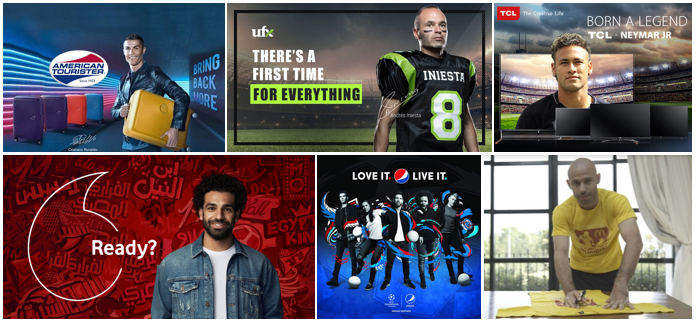Ten image rights trends as least exciting World Cup approaches
With less than 3 months for Russia World Cup start, there seems to be wide consensus about the lack of excitement generated by the most important national teams tournament. This is also the case for brands that normally engage with players for major global marketing campaigns ahead of big tournaments, as you can see from the list of campaigns that we have put together in a new release of Prime Time Sport’s players marketing newsletter. The number of brand activations with football players is still massive, but few of them are strictly related to the World Cup.
But what are the reasons behind this trend change? We have put together the ten trends that are transforming the usage of player image rights by brands around the world. And here we go…
- Media objectives rather than strategic. Players (and their powerful social media channels) are more often used to amplify brand campaigns rather than to seek attributes image transfer.
- Smarter investment. Brands are no longer putting together massive TV commercial productions and instead are producing lower cost pieces, or even pieces produced by players themselves. Furthermore, brands are leveraging massive audience in player’s social medial channels instead of paying expensive spaces on TV.
- Shorter and less restrictive contracts. It’s is now very rare to see multiyear contracts (except for sports brands), and instead brands are signing campaign-led contracts with less exclusivity expectations, hence resulting in much lower investment as well.
- Activation moving to digital space. This helps reaching the tough younger audience, as well as allowing a high level of interaction with consumers.
- Change in KPI’s. Brands seek immediate outcome and ROI is less driven by brand attribute moves and more by Youtube views, post likes, form applications or even sales.
- Disconnection from major tournaments. The above mentioned change in dynamics, as well as 3 consecutive tournaments lacking fan engagement (Russia WC 2018, Euro 2020 with no host and Qatar WC 2022), has provoked a dramatic decrease of image rights usage seasonality. Rights are now used more tactically and on a daily basis.
- More democratic access. Digital based image rights packages means smaller and less traditional brands (including app’s and other digital only brands) can now afford campaigns with football icons.
- Football legends on duty. An army of high profile players have retired recently (such as Ronaldinho, Lampard, Gerrard or Kaka) opening a new world for brands. Football legends have plenty of time to physically participate in events anywhere in the world, and bring alone huge social media databases to tap into.
- Irruption of Youtube influencers. The likes of KSI and DJMariio were originally used by brands alongside football players, but are now big enough to compete with the players themselves.
- More geo targeted activity. National heroes succeeding in top European tournaments (like Mo Salah, Alexis Sanchez or Luis Suarez) are not big enough to be used by brands locally, but are the choice of multiple brands in their home countries.
Esteve Calzada
CEO Prime Time Sport – Primetubers

